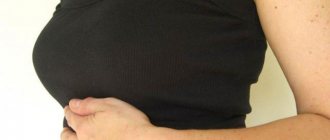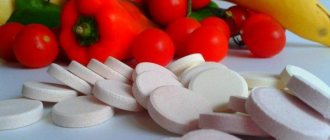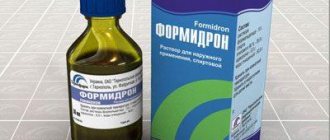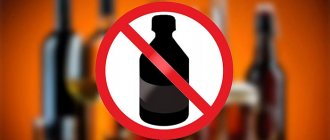Poisoning of any type is considered one of the most common types of diseases that the average person encounters regularly throughout his life.
To alleviate poor health during mild stage intoxication, people often resort to the use of medications. One of the most effective methods for this is the use of a narrow-profile antidote - an antidote that has a quick and strong effect. Resorting to its help on your own without first consulting a doctor is life-threatening. An incorrect dosage can worsen the patient’s already terrible condition or blur the clinical picture. One of the most popular antidotes used by doctors is the drug Unithiol. It can be used for various types of poisoning, since the mechanism of action of Unithiol proves its effectiveness in different cases.
pharmachologic effect
Unithiol contains two sulfhydryl groups. According to the mechanism of action, the drug is close to complexones (organic substances that form strong compounds with cations / positive ions / metals). Its active sulfhydryl groups react with thiol poisons found in the blood and tissues and form non-toxic (harmless) complexes with them, which are excreted in the urine. The binding of poisons leads to restoration of the function of the body's enzyme systems affected by the poison.
The same mechanism of action served as the basis for the use of unithiol in the treatment of hepatocerebral dystrophy (hereditary disease of the liver and brain associated with impaired metabolism of proteins and copper / Wilson-Westphal-Konovalov disease /), in the pathogenesis (process of disease development) in which metabolic disorders play a certain role copper in the body and accumulation of metal in the subcortical nuclei (in the structural formations of the brain).
Mechanism of action of "Unitiol"
The drug "Unitiol" was developed in the Soviet Union as an antidote that helps against the effects of certain toxic chemicals. Poisoning can be treated if:
- prevent the entry of a toxic substance into the body;
- speed up its elimination;
- tie it up and remove it from the body before the consequences develop.
You can prevent the substance from entering the body by using prophylactic methods, or by removing the person from the area of infection. Blood thinning and forced diuresis help speed up its elimination. This means that a large amount of fluid is injected intravenously and then removed by stimulating kidney function, while the toxic substance is excreted in the urine.
Antidotes or antidotes can bind and remove poison from the body. They are different for each toxic substance. "Unithiol" is a drug that contains two sulfhydryl groups (– SH). By the way, its predecessor, the British anti-lewisite BAL, developed to combat the toxic substance lewisite, has only one (– SH) group.
How can “Unitiol”, the mechanism of action of which is associated with active (– SH) groups, help? Unithiol sulfhydryl groups are capable of binding heavy metals (mercury, chromium, arsenic, copper, zinc, bismuth and others), which are present in some medicines, devices, paints and exhaust gases. A decrease in the number of sulfhydryl groups in the blood when poisonous substances are added to them causes pain. This happens with diabetes mellitus, amyloidosis, and polyneuropathy caused by chronic alcoholism.
Unithiol binds heavy metals and releases sulfhydryl blood groups. This relieves pain and allows enzymes, whose work has been disrupted by the presence of heavy metals in the blood, to recover. Therefore, it is believed that Unithiol is an effective antidote for heavy metal poisoning, and it promotes their elimination.
“Unithiol” is used as an antidote not only for poisoning with heavy metals, but also for poisoning with substances that cause a lack of sulfhydryl groups in the body (alcohol).
Mode of application
For the treatment of acute and chronic poisoning with arsenic and mercury compounds, unithiol is administered intramuscularly or subcutaneously in the form of a 5% aqueous solution in an amount of 5-10 ml (at the rate of 0.05 g of the drug or 1 ml of a 5% solution per 10 kg of the patient’s body weight). Treatment should begin as early as possible. In case of poisoning with arsenic compounds, injections are given on the first day every 6-8 hours (3-4 injections per day depending on the patient’s condition), on the second day 2-3 injections every 8-12 hours, on subsequent days - 1-2 injections per day. In case of poisoning with mercury compounds, injections are given according to the same scheme for 6-7 days. For children, the drug is prescribed in smaller doses according to age.
The duration of use depends on the rate of removal of toxic (harmful) compounds from the body. Treatment is carried out until signs of intoxication (poisoning) disappear. For poisoning with mercury salts, administer for at least 6 days.
In case of poisoning with cardiac glycosides, it is administered in the first 2 days in the above doses 3-4 times a day, then 1-2 times a day until the cardiotoxic effect (damaging nostrils on the heart) ceases. The administration of unithiol in acute poisoning does not exclude the use of other therapeutic measures (gastric lavage, inhalation of oxygen, administration of glucose, etc.).
For hepatocerebral dystrophy, 5-10 ml of 59c solution is administered intramuscularly daily or every other day; per course 25-30 injections with a break between courses of 3-4 months.
For chronic alcoholism, unithiol is used in complex therapy, 3-5 ml of a 5% solution 2-3 times a week. To relieve delirium (relieve delusional states resulting from chronic alcoholism), 4-5 ml of a 5% solution of unithiol is administered once.
There is evidence of the beneficial effect of unithiol in the treatment of diabetic polyneuropathies (multiple damage to peripheral nerves associated with high blood sugar): improving the condition of the peripheral nervous system and normalizing the permeability of capillaries (the smallest vessels). Prescribe 5 ml of a 5% solution intramuscularly (10 injections). It is believed that patients with diabetes have a reduced level of sulfhydryl groups in the blood. There is also evidence of improvement under the influence of unithiol in the condition of patients with secondary amyloidosis (a disease associated with impaired protein metabolism and amyloid deposition in internal organs, which leads to disruption of their function).
When is the use of Unithiol necessary?
Despite the popular belief that this drug is suitable for treating poisoning by absolutely all types of heavy metals, this is not true. If the victim is a victim of lead intoxication, then it will not help him. But it can cope with alleviating the current condition of Wilson-Konovalov disease and intoxication with cardiac glycosides.
But, no matter what the medicine is used for, be it the treatment of alcohol intoxication, or emergency assistance for zinc poisoning, it is worth remembering a number of its contraindications:
- liver failure,
- high blood pressure,
- individual intolerance to components.
It is also worth remembering that the product also has several characteristic side effects, which include:
- nausea,
- tachycardia,
- pallor,
- dizziness,
- allergies.
If the patient is in the acute stage of poisoning, then it will not be possible to limit oneself to one antidote. Doctors prescribe complex therapy in a hospital setting under mandatory medical supervision. Supportive treatment methods are usually prescribed:
- gastric lavage,
- administration of glucose,
- oxygen therapy.
Before prescribing medicine to a patient, the doctor must inquire about his chronic diseases and the list of medications he is taking. You should not use Unithiol if it turns out that the patient is taking products based on alkalis or heavy metals. Otherwise, the effectiveness of the medication will quickly disappear.
The main analogues of this product are considered to be:
- drug Zorex,
- R-ICS 1,
- Unitiol-Ferein,
- Unithiol-Binergy.
They contain an identical active ingredient, and they work according to the same principle of action on the body, having common indications for use.
To maintain the effectiveness of the medicine, it should be stored only under recommended conditions. You can clarify them, as well as the dosage, with your doctor or in the instructions.
Indications
Unithiol is used to treat acute and chronic poisoning with compounds of arsenic, mercury, chromium, bismuth and other metals related to the so-called thiol poisons, i.e. substances that can interact with sulfhydryl (thiol) groups of enzyme proteins and thereby inactivate them (suppress activity). Unithiol is less active in case of lead poisoning.
Unithiol is used for cardiac poisoning with glycosides, as well as in complex therapy for chronic alcoholism.
UNITHIOL
UNITHIOL
(
Unithiolum
; synonym:
Dimaval, Unitioi
, etc.; sp. B) - an antidote used for poisoning with arsenic compounds and heavy metals. Sodium 2,3-Dimercaptopropanesulfonate; C3H7S3NaO3-H2O:
White or white with a slightly creamy tint, finely crystalline powder with a very faint mercaptan odor. Easily soluble in water, slightly soluble in alcohol and other organic solvents. An aqueous solution of the drug is a colorless transparent liquid with a faint odor of mercaptan; pH of 5% solution 3.1-5.5. Sterilize at t° 100° for 30 minutes.
According to chemistry structure and pharmacocol. properties of U. are close to dicaptol (see), but differ from it in solubility in water, less toxicity and a greater breadth of therapeutic action.
U. is one of the most effective antidotes used for poisoning with arsenic compounds and salts of heavy metals. However, in case of poisoning with arsenic hydrogen, secondary haloarsines (diphenylchloroarsine, etc.), as well as selenium and uranium salts, U. is ineffective. The antitoxic properties of U. are due to its ability, at the site of two sulfhydryl groups, to form with cations cyclic, difficult to dissociate, but easily soluble in water thioarsenites and mercaptans, which are quickly excreted through the kidneys.
The strong binding of uranium to arsenic and heavy metals and the rapid removal from the body of the resulting complexes not only prevents the blockade of the thiol groups of enzymes, but also helps restore their activity, as a result of which the symptoms of poisoning are weakened or completely eliminated. U. also increases the excretion of certain cations (especially copper and zinc) from metal-containing enzymes.
U. is quickly absorbed into the blood when administered parenterally. At maximum concentrations, U accumulates in the blood within 15-30 minutes. after intramuscular injection. Unlike dicaptol, U. is distributed predominantly extracellularly. Its half-life elimination time is approx. 1-2 hours In 5 hours. after administration, only traces of U are found in the body. It is excreted mainly by the kidneys, ch. arr. in the form of products of incomplete and complete oxidation, partially in unchanged form.
U. apply
for acute and chronic poisoning with lewisite and other organic and inorganic arsenic compounds, as well as compounds of mercury, gold, chromium, cadmium, cobalt, copper, zinc, nickel, bismuth, antimony. In case of poisoning with arsenic and certain metals (eg, lead), U. is used in combination with thetacine-calcium (see). In addition, U. is used to mobilize and increase the excretion of copper ions from the body during hepato-cerebral dystrophy (see), in the pathogenesis the cut plays a role in the accumulation of copper in the nuclei of the striopallidal system.
There is evidence of the effectiveness of U. in alcoholism, schizophrenia, and intoxication with cardiac glycosides.
In case of acute poisoning with arsenic compounds, heavy metals and cardiac glycosides, U. is prescribed mainly intramuscularly or subcutaneously 5-10 ml of 5% solution at the rate of 5 mg/kg or 1 ml of this solution per 10 kg of weight (mass). body according to the following scheme: on the first day - 3-4 injections (in severe cases - up to 8 injections), on the second day - 2-3 injections, in the next 3-7 days - 1-2 injections per day. In case of poisoning with compounds of arsenic and heavy metals, U. is also used for gastric lavage, 100-150 ml of 5% solution. For hepatocerebral dystrophy, U. is prescribed intramuscularly at 5-10 ml of 5% solution daily or every other day in courses of 25-30 injections. When carrying out anti-alcohol therapy, U. is administered intramuscularly at 3-5 ml of 5% solution 2-3 times a week or once (to relieve attacks of alcoholic delirium).
Side effect
U. may manifest itself as nausea, less often vomiting, tachycardia, hypertension, pale face, dizziness, and anxiety. The administration of diphenhydramine reduces the severity of side effects.
U. is incompatible with preparations containing heavy metals and quickly decomposes in the presence of alkalis.
Contraindicated
for severe liver diseases, hypertension. In case of severe heart disease, U. is prescribed with caution.
Release form:
powder; ampoules of 5 ml of 5% solution. Storage: under normal conditions.
See also Antidotes of chemical agents, Antidotes.
Bibliography:
Mashkovsky M.D. Medicines, part 2, p. 181, M., 1984; Trin u s F. P. et al. Molecular mechanisms of action of dithiols, Vestn. USSR Academy of Medical Sciences, No. I, p. 75, 1984; Aposhian N. V. DMSA and DMPS—water soluble antidotes for heavy metal poisoning, Ann. Rev. Pharmacol. Toxicol., v. 23, p. 193, 1983.
F. P. Trinus.
ATTENTION!
The information on the page you are viewing is created for informational purposes only and does not in any way promote self-medication. The resource is intended to provide healthcare workers with additional information about certain medications, thereby increasing their level of professionalism. The use of the drug " Unitiol " necessarily involves consultation with a specialist, as well as his recommendations on the method of use and dosage of the medicine you have chosen.
Source: allmed.pro
Description, composition, release form of the medicine and its packaging,
In what form can you find the drug “Unitiol” in the pharmacy? Instructions for use (this medication is not produced in tablets) indicates that the drug mentioned is available in the form of a clear solution, which is intended for subcutaneous or intramuscular administration. It has a faint odor of hydrogen sulfide and is also light pink in color (may be colorless).
What components are included in the preparation "Unitiol"? The instructions for use state that the active ingredient of this product is sodium dimercaptopropanesulfonate monohydrate. The medication also includes auxiliary compounds in the form of sulfuric acid, disodium edetate (Trilon B) and water for injection.
This medicine is sold in 5 ml glass ampoules. They are packed in contour cells, which are placed in packs of paper.
Indications of the solution
For what indications can a patient be prescribed the medication “Unitiol”? Instructions for use (injections should be carried out only by an experienced medical professional) indicate that this product is used for:
- intoxication with bismuth, arsenic, chromium, mercury or cardiac glycosides;
- chronic alcoholism and delirium delirium as part of combination treatment;
- hepatocerebral dystrophy (Wilson-Konovalov syndrome).











